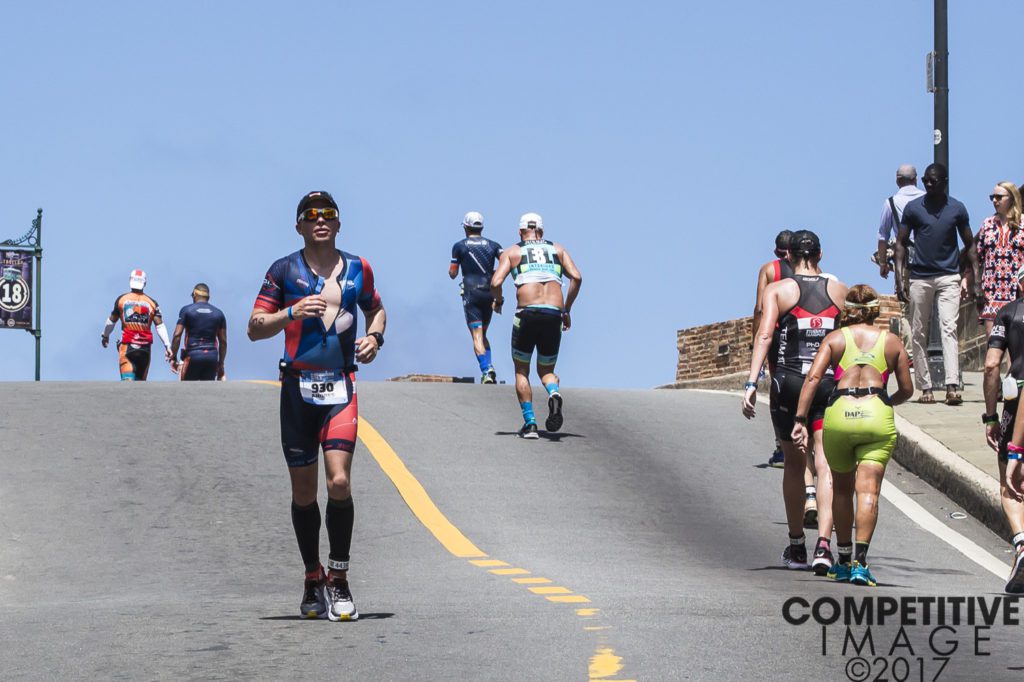Beat the heat with hydration
Don't fall victim to dehydration this summer, it could be the difference from making Kona or not

As the temperatures begin to reach all-time highs, make sure you stay hydrated before you go out for your training sessions and races. Many triathletes have collapsed in the latter stages of an Ironman. Some have even come close to death. And countless thousands of triathletes have lost precious minutes, even hours, because they’ve had to slow down from dehydration.
Several hundred research papers show that the more sweat and weight loss during an ultra-endurance event like the triathlon, the more drastically your running performance declines.
The rate you lose sweat depends on a variety of factors including temperature, humidity, the intensity of your effort and your individual sweat rate (which is highly variable).
How much sweat can we lose during a race or training effort? Lots. On a hot humid day, an average sized person (110 to 165 lbs) can lose 1.6 to 2 litres of fluid or 2.5 percent to 3.5 percent of body weight.
What causes these performance declines when you train in the heat? It’s really a formidable combination of effects on your thermal, cardiovascular, metabolic and central nervous systems that conspire to make you suffer. A drop in blood flow to the muscle, skin and brain; a decrease in blood pressure; and a decrease in oxygen delivery to the working muscles all cause an earlier onset of anaerobic metabolism and hyperthermia-induced fatigue, which slow you down.
How much should we be drinking?
Generally, exercise scientists agree that we need to rehydrate at a rate not exceeding a loss of two percent of body weight loss. This is very difficult because we simply can’t ingest water quickly enough to replace our sweat losses. Our stomach can only hold 900 to 1,300 ml, or 30 to 44 ounces, and we can only empty about 800ml/hour while exercising. Large volumes of excess water pool in our gastrointestinal tract, sloshing around and causing gastric discomfort, nausea, even vomiting.
How frequently should we drink?
It’s important to keep drinking at regular intervals during your triathlon at a rate that replaces fluid loss, around 400 to 800 ml of fluid per hour. This averages out at roughly five to seven ounces, or 250 ml of fluid, every 15 to 20 minutes.
Post-Race and Post-Training Rehydration
Many studies show that carbohydrates consumed immediately after and two hours after exercise enhances muscle glycogen restoration. This is most effective if ingested from a fluid, as fluid is absorbed faster.

Tips for Surviving High Heat and Humidity and Maintaining Performance Intensity:
- Drink lots of cold water before, during and after your training efforts.
- Drink 200-500ml 15 to 20 minutes before starting and drink at least one cup of water every 20 minutes during your activity. Carry a water bottle.
- Post-training or post triathlon rehydration: Choose carbohydrate-rich fluids such as juices that replace both water losses and muscle glycogen.
- About 450mg of sodium per hour is the minimum amount required to maintain plasma volume and slow the decline in plasma sodium concentration that can accompany prolonged exercise.
Triathlon Racing Advice
- On hot, humid days don’t push your pace beyond your current level of fitness. Above all, do not be tempted to go out fast from the start. Early dehydration invites disaster.
- Experiment with sports drinks before using in races.
- A brief break combined with drinking cold fluids, and taking a sponge bath, provide great relief in the middle of the running section of your triathlon.
General Advice
- Food digestion interferes with the blood flow to the working muscles, so avoid large meals before running in the heat.
- Electrolyte sports drinks with sodium have been found to help endurance athletes retain water in their system, so you’re well advised to try them.
- You’ll be able to tell whether you are hydrating adequately by the colour of your urine. Dark yellow indicates low hydration, and pale to light yellow is good. The old adage of eight glasses a day of fluid is not quite right. You should ingest a ½ ounce of fluid per pound of body weight if you are running in hot conditions. 80 to 100 ounces of fluid covers almost every runner.

